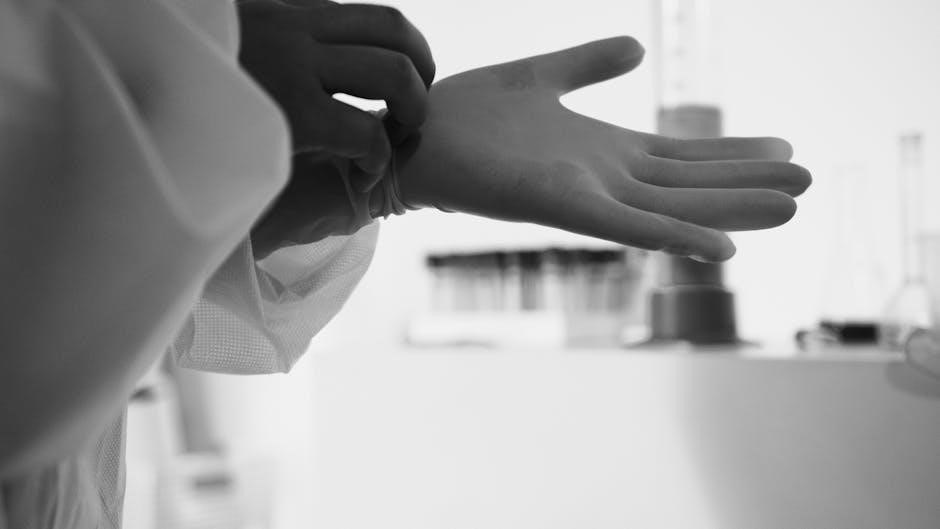The introduction to platelet rich plasma preparation protocol involves understanding the concept of centrifugation and its role in separating blood components, using
- specific tubes and materials
for optimal results always․
Overview of Platelet Rich Plasma
Platelet rich plasma is a biological treatment option that is increasingly used in various medical fields, including sports medicine and tissue regeneration․ The concept of platelet rich plasma involves the use of autologous platelets, which are derived from the patient’s own blood, to stimulate healing and tissue regeneration․ This is achieved through the centrifugation of whole blood, which separates the blood components into packed red blood cells, platelet-rich plasma, and platelet-poor plasma․ The platelet-rich plasma is then used to treat various conditions, including chronic wounds and joint injuries․ The use of platelet rich plasma has been shown to be effective in promoting tissue healing and regeneration, and it is considered a safe and non-toxic treatment option․ The preparation of platelet rich plasma involves the use of specific tubes and materials, and it is essential to follow a standardized protocol to ensure optimal results․ The benefits of platelet rich plasma have been widely recognized, and it is becoming an increasingly popular treatment option in various medical fields․
Importance of Standardized Protocol
A standardized protocol is essential for the preparation of platelet rich plasma to ensure consistency and reliability of the treatment․ The use of a standardized protocol helps to minimize variations in the preparation process, which can affect the quality and efficacy of the platelet rich plasma․ A well-defined protocol outlines the specific steps and procedures to be followed, including the type of tubes and materials to be used, the centrifugation speed and time, and the handling and storage of the platelet rich plasma․ This helps to ensure that the platelet rich plasma is prepared in a consistent and reproducible manner, which is critical for achieving optimal treatment outcomes․ The importance of a standardized protocol cannot be overstated, as it helps to establish a high level of quality control and ensures that the platelet rich plasma is safe and effective for use in various medical applications․ By following a standardized protocol, healthcare professionals can ensure that their patients receive the best possible treatment outcomes․

Whole Blood Centrifugation Process
Centrifugation separates blood components using
- specific speeds
and times to isolate platelets and plasma always․
Separation of Blood Components
The separation of blood components is a crucial step in the platelet rich plasma preparation protocol, involving the use of centrifugation to divide the blood into its distinct components, including red blood cells, white blood cells, and platelets․ This process is typically performed using a centrifuge machine, which spins the blood at high speeds to separate the components based on their density․ The resulting fractions include packed red blood cells, platelet-rich plasma, and platelet-poor plasma․ The separation of these components is essential for the preparation of platelet-rich plasma, as it allows for the concentration of platelets and the removal of unwanted cells and contaminants․ By using specific centrifugation speeds and times, the separation of blood components can be optimized to produce high-quality platelet-rich plasma․ The use of specialized tubes and equipment can also help to improve the efficiency and effectiveness of this process․ Overall, the separation of blood components is a critical step in the preparation of platelet-rich plasma․
Role of Centrifugation Speed and Time
The role of centrifugation speed and time is critical in the preparation of platelet-rich plasma, as it directly affects the quality and yield of the final product; Centrifugation speed and time must be carefully optimized to ensure the effective separation of blood components․ A centrifugation speed that is too low may not effectively separate the components, while a speed that is too high may damage the platelets․ The centrifugation time must also be carefully controlled, as prolonged centrifugation can lead to platelet activation and aggregation․ By using a combination of optimal centrifugation speed and time, the resulting platelet-rich plasma can be highly concentrated and pure․ This is essential for the preparation of high-quality platelet-rich plasma, which is used in a variety of medical applications․ The use of standardized centrifugation protocols can help to ensure consistency and reproducibility in the preparation of platelet-rich plasma․ Standardized protocols can be developed and implemented to optimize the centrifugation process․

Platelet Rich Plasma Preparation Techniques
Techniques involve using
- specific
equipment and methods for optimal platelet-rich plasma preparation always․

Use of Autologous Platelets
The use of autologous platelets is a crucial aspect of platelet-rich plasma preparation, as it ensures that the platelets used are from the patient’s own body, reducing the risk of immune reactions or disease transmission․
This method involves collecting the patient’s blood and then separating the platelets from other blood components through centrifugation․
The resulting platelet-rich plasma is then used for therapeutic purposes, such as tissue repair and regeneration․
The use of autologous platelets also eliminates the need for donor screening and matching, making the process more efficient and convenient․
Additionally, autologous platelets can be used in a variety of medical applications, including orthopedic and cosmetic procedures․
The benefits of using autologous platelets include reduced risk of infection, faster recovery times, and improved treatment outcomes․
Overall, the use of autologous platelets is a safe and effective way to promote healing and tissue regeneration, and it has become a popular treatment option in many medical fields․
With the use of autologous platelets, patients can expect to see significant improvements in their condition, and it has become a valuable tool in the field of regenerative medicine․
The process of using autologous platelets is relatively simple and can be performed in a clinical setting․
Mounting of Plastic Needle and Aspiration of Platelet-Poor Plasma
The mounting of a plastic needle on a syringe is a critical step in the platelet-rich plasma preparation protocol, as it allows for the gentle aspiration of platelet-poor plasma․
This process involves carefully attaching the plastic needle to the syringe and then inserting it into the tube containing the centrifuged blood․
The needle is then used to aspirate the platelet-poor plasma, which is the layer of plasma that is depleted of platelets, from the top of the tube․
It is essential to avoid touching the platelet pellet at the bottom of the tube to prevent contamination and ensure the quality of the platelet-rich plasma․
The aspiration process is typically done slowly and carefully to prevent disturbing the platelet pellet․
The use of a plastic needle is preferred over other materials, as it reduces the risk of platelet activation and aggregation․
The aspirated platelet-poor plasma is then discarded, and the remaining platelet-rich plasma is used for therapeutic purposes․
The entire process is typically performed in a sterile environment to minimize the risk of contamination․
The aspiration of platelet-poor plasma is a delicate step that requires attention to detail and careful technique․

Applications of Platelet Rich Plasma
Platelet rich plasma has various medical
- applications
for treatment and therapy always․
Treatment of Chronic Wounds and Tissue Regeneration
The treatment of chronic wounds and tissue regeneration is a significant application of platelet rich plasma, utilizing its ability to stimulate healing and regeneration of damaged tissues․ This is achieved through the injection of platelet rich plasma into the affected area, where it releases growth factors that promote cell proliferation and tissue repair․ The use of platelet rich plasma in this context has been shown to be effective in treating various types of chronic wounds, including diabetic foot ulcers and pressure sores․ Additionally, platelet rich plasma has been used to enhance tissue regeneration in orthopedic and dental applications, such as bone grafting and periodontal therapy․ The protocol for preparing platelet rich plasma for these applications involves a series of centrifugation steps to concentrate the platelets and activate their growth factors․ Overall, the use of platelet rich plasma for chronic wound treatment and tissue regeneration offers a promising therapeutic approach for promoting healing and tissue repair․ Various studies have demonstrated its efficacy and safety in clinical settings․
Use in Sports Medicine and Other Fields
The use of platelet rich plasma in sports medicine and other fields has gained significant attention in recent years, with applications in treating injuries and promoting recovery․ Platelet rich plasma has been used to treat various sports-related injuries, such as tendonitis and ligament sprains, by injecting it into the affected area to stimulate healing and reduce inflammation․ Additionally, platelet rich plasma has been used in other fields, including cosmetic surgery and dermatology, to promote skin regeneration and rejuvenation․ The protocol for preparing platelet rich plasma for these applications involves a series of steps to concentrate the platelets and activate their growth factors․ Various studies have demonstrated the efficacy and safety of platelet rich plasma in these fields, with many athletes and patients reporting positive outcomes․ The use of platelet rich plasma in sports medicine and other fields offers a promising therapeutic approach for promoting healing and recovery, with ongoing research aimed at further understanding its benefits and applications․ Overall, the use of platelet rich plasma is a rapidly evolving field with significant potential for growth and development․
